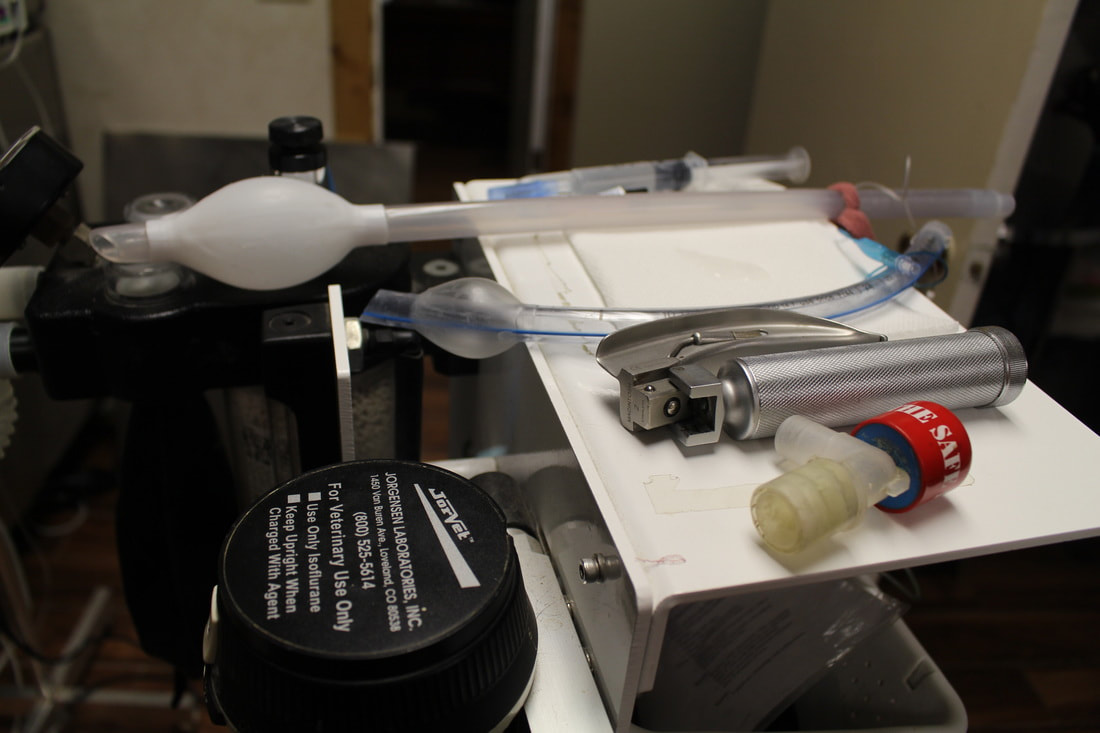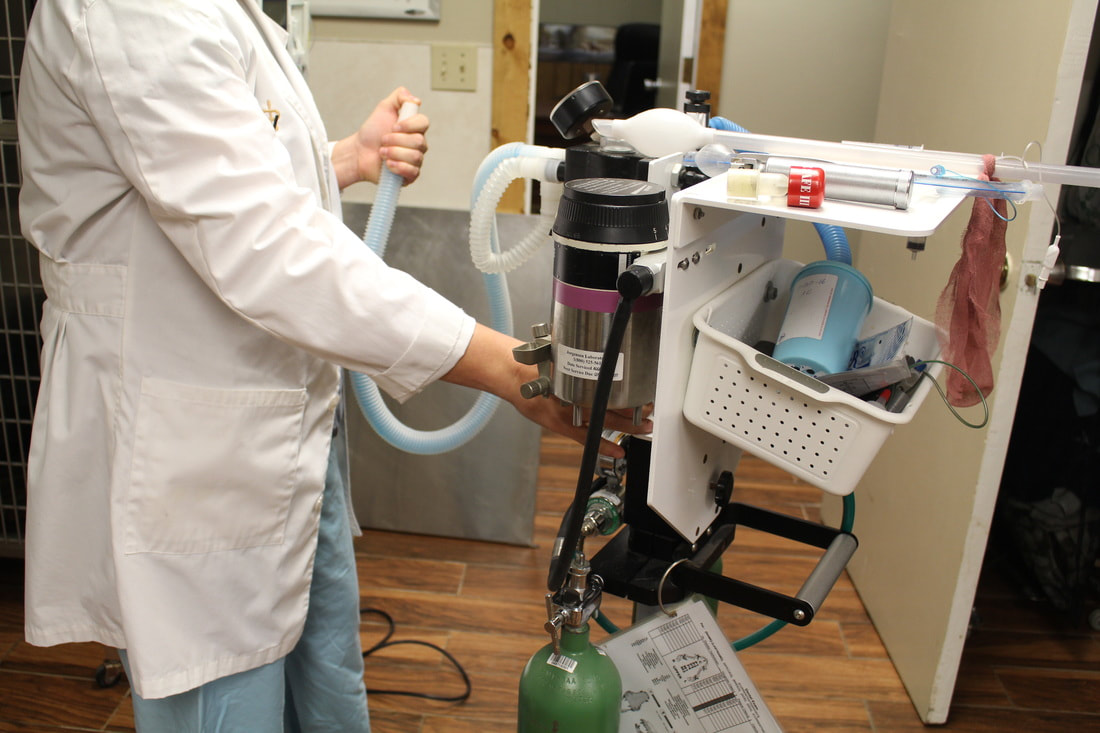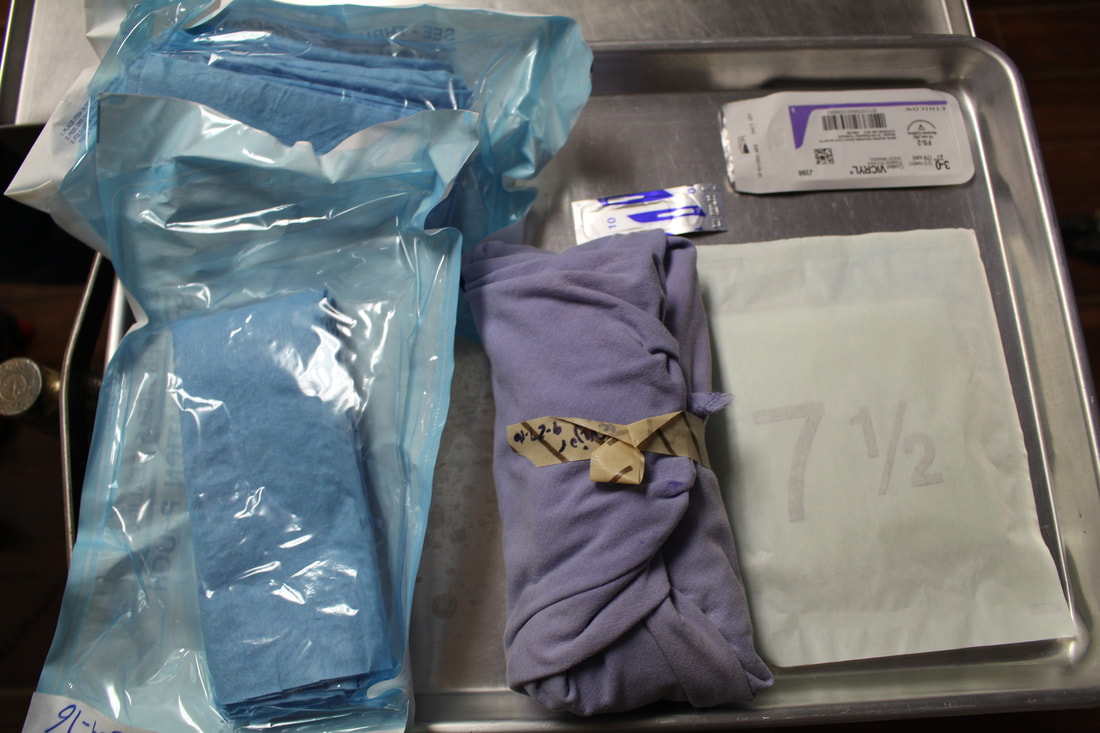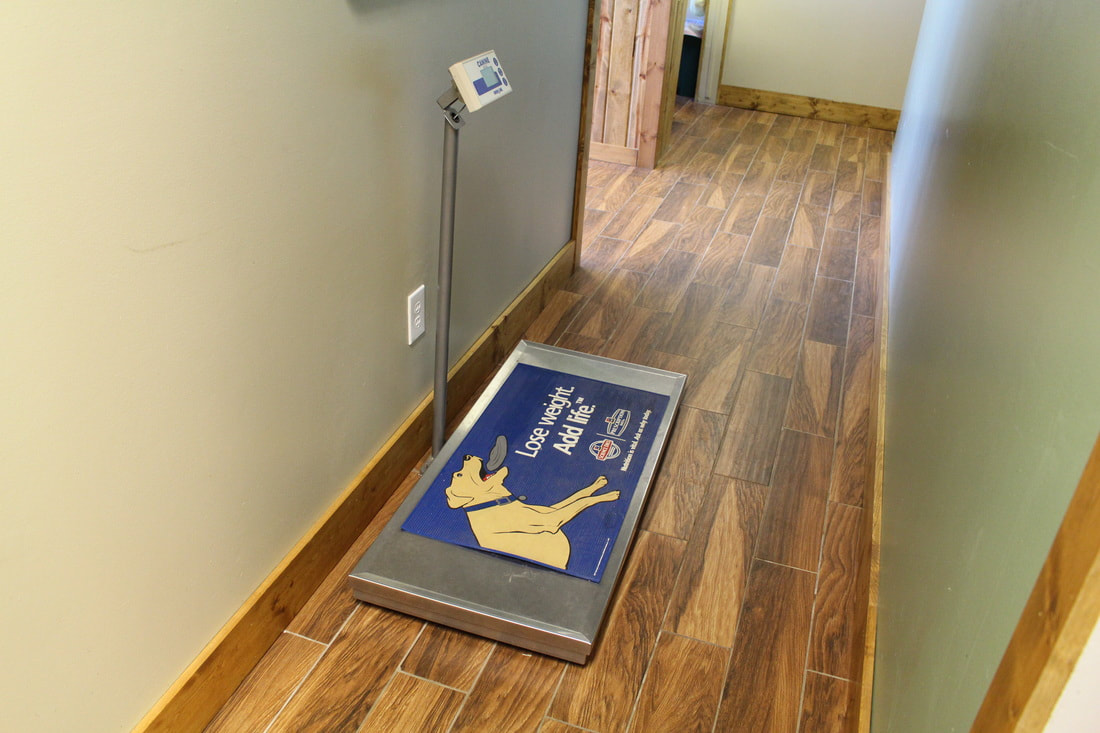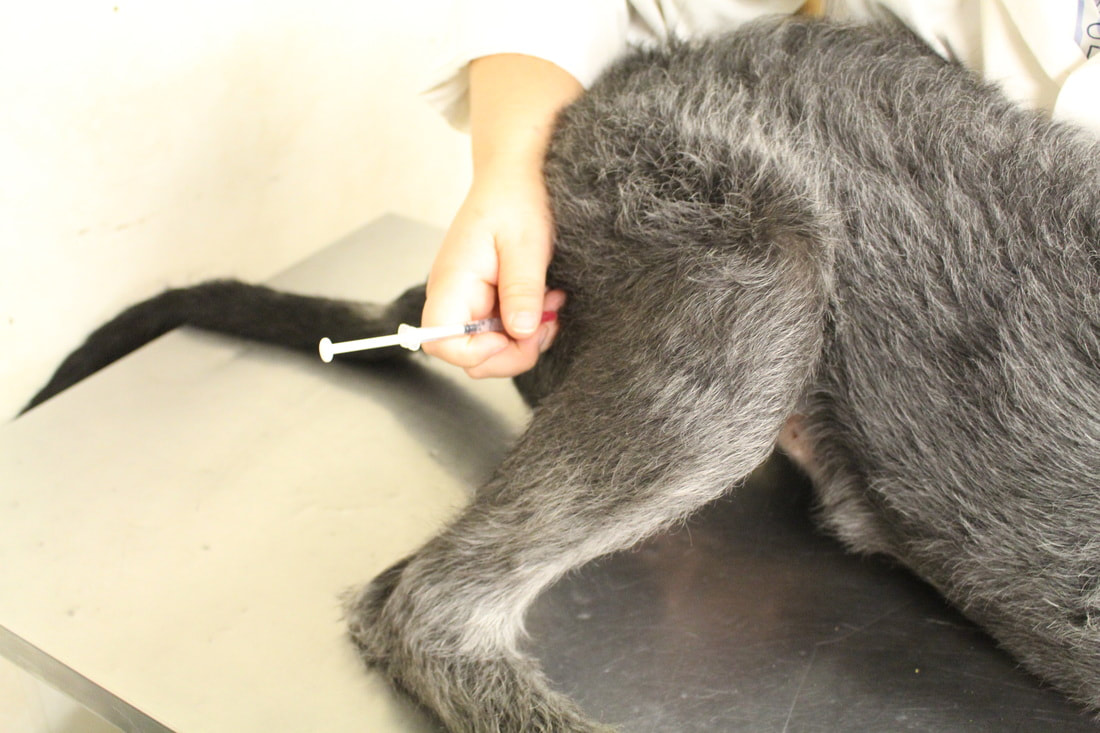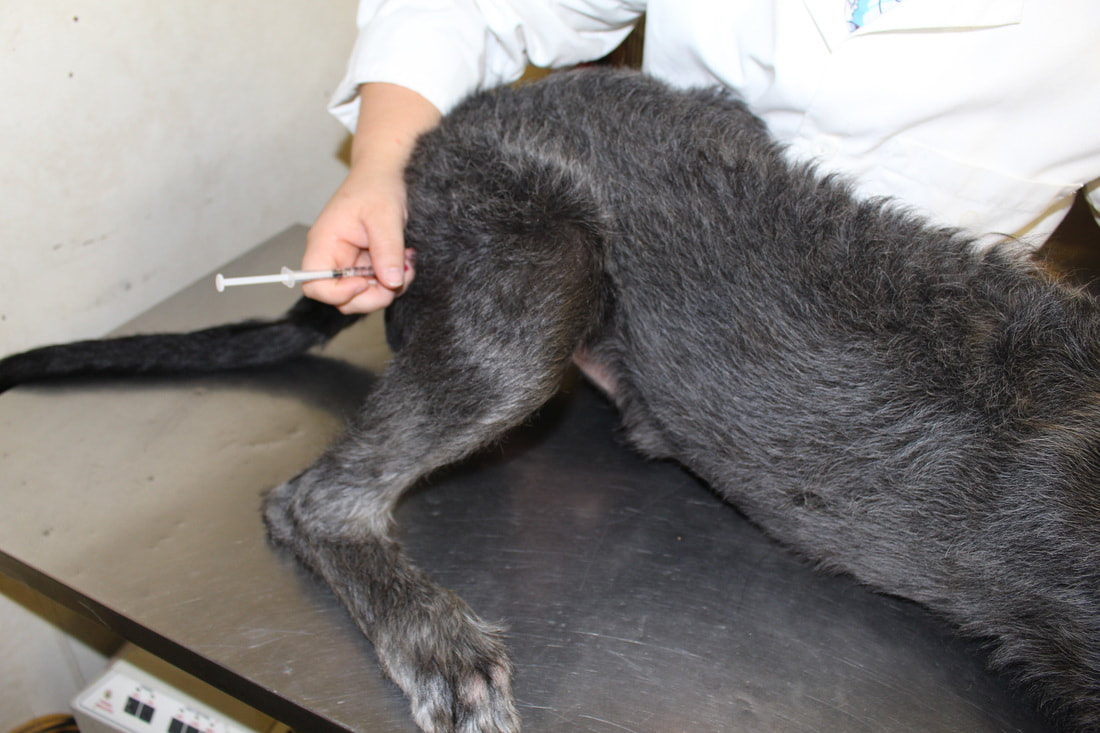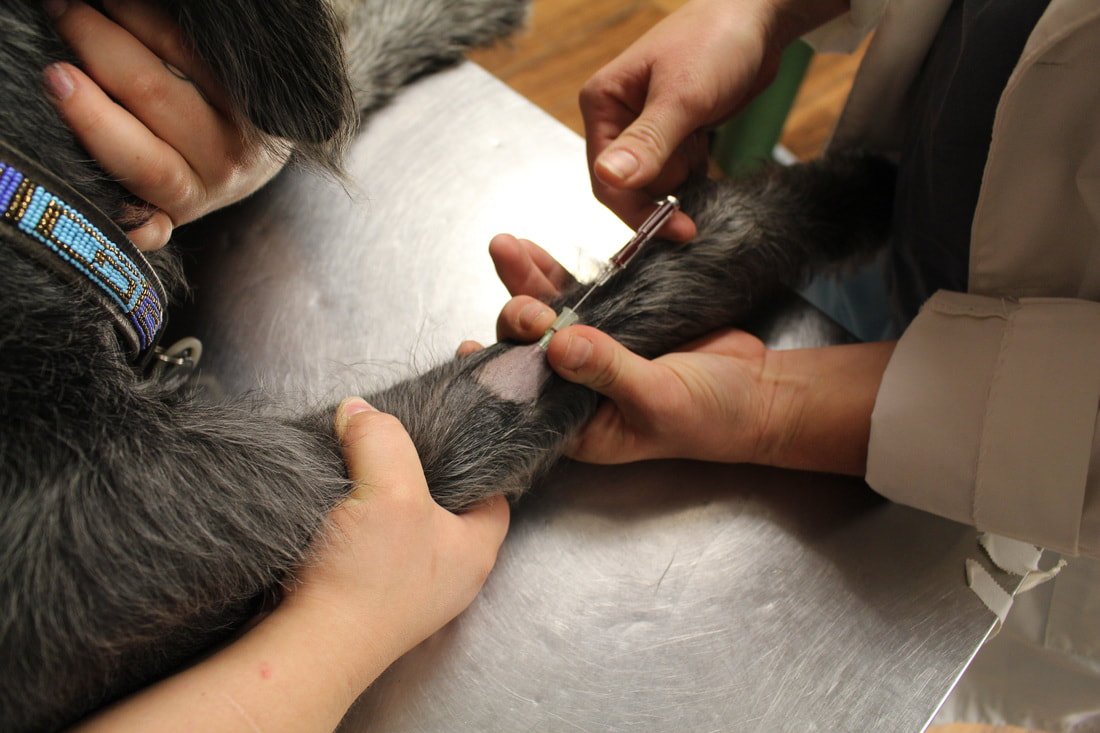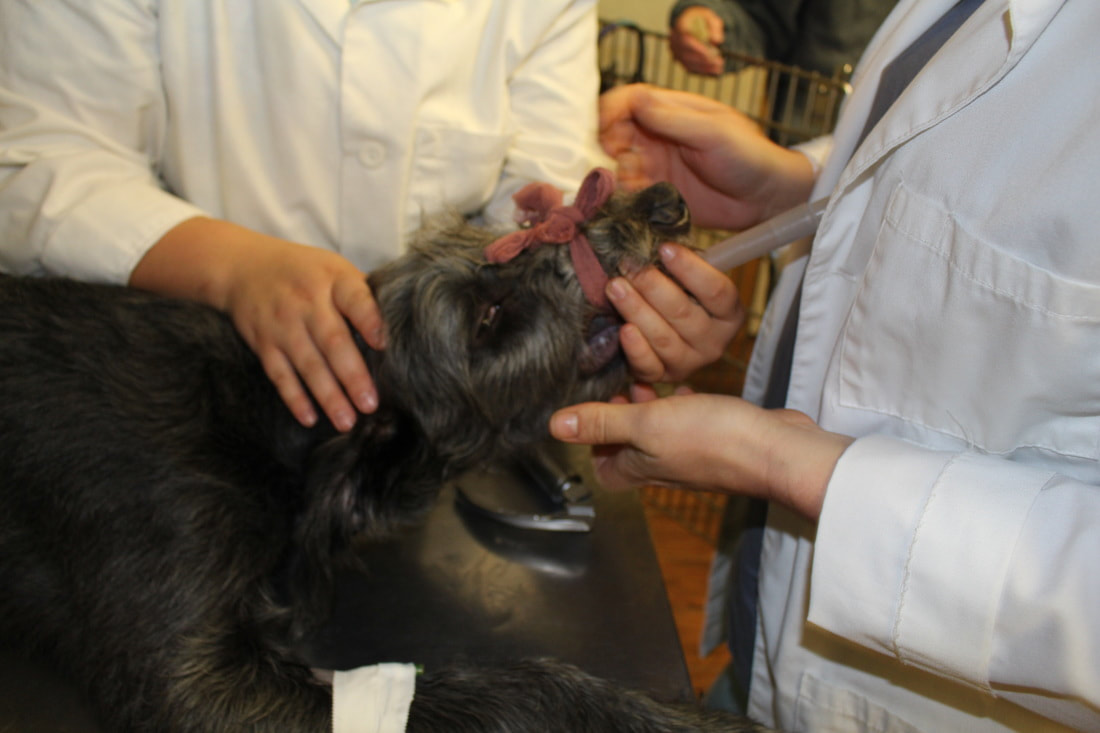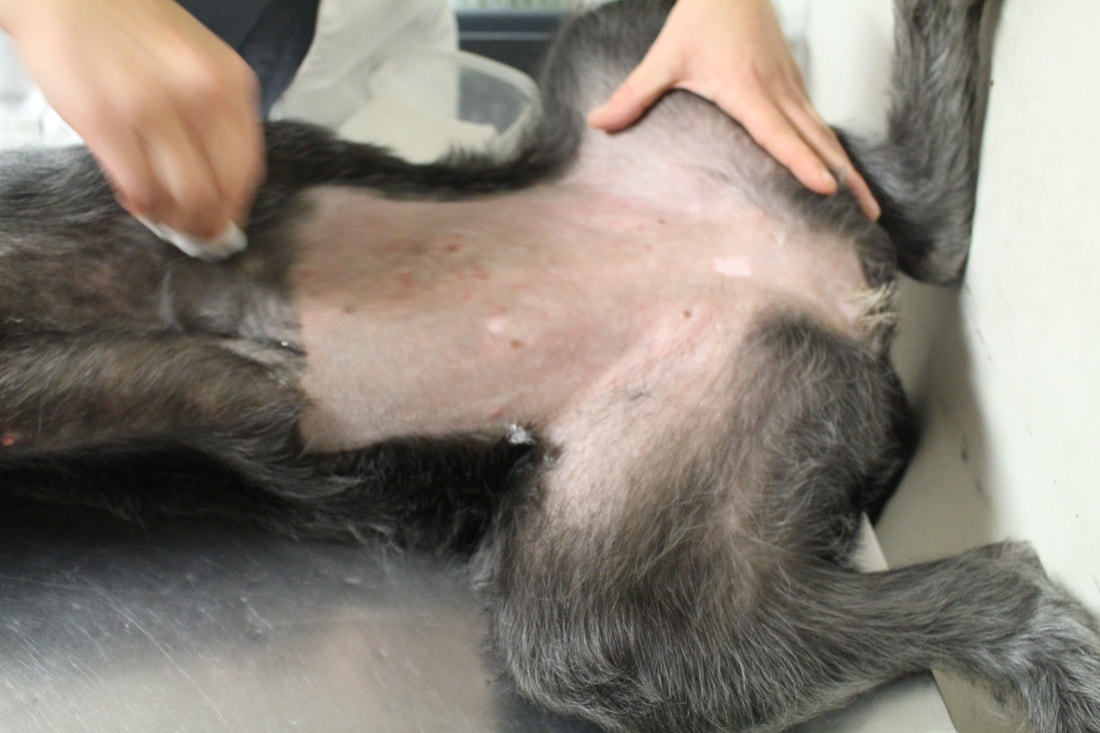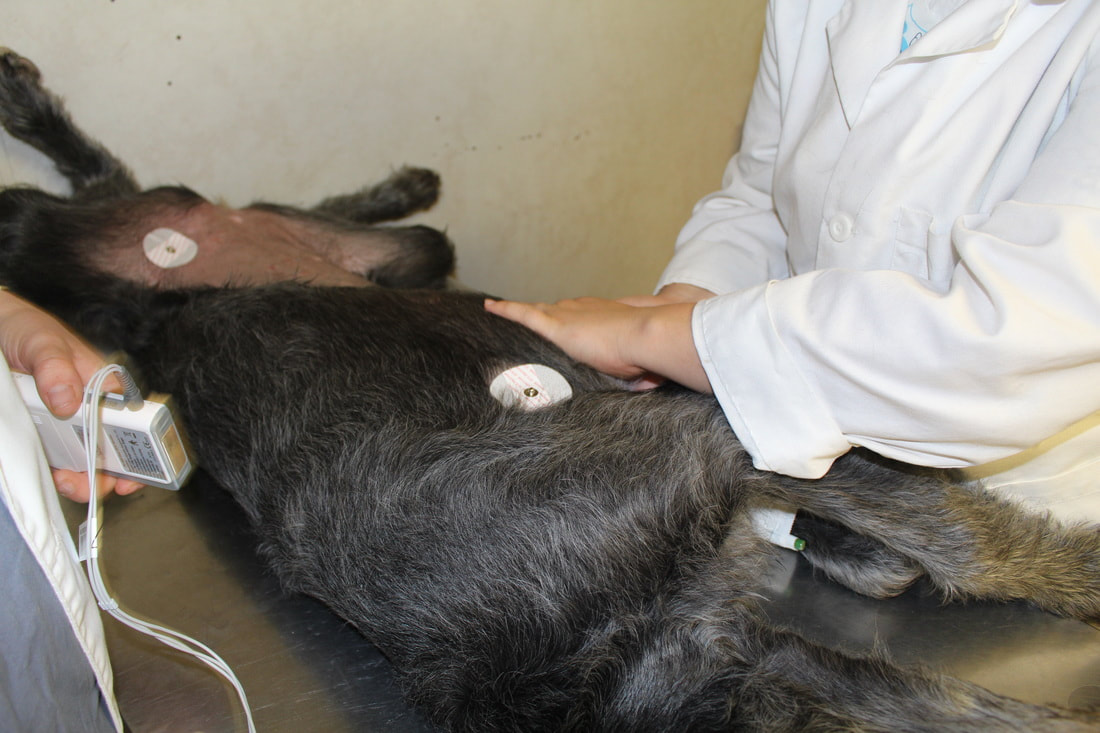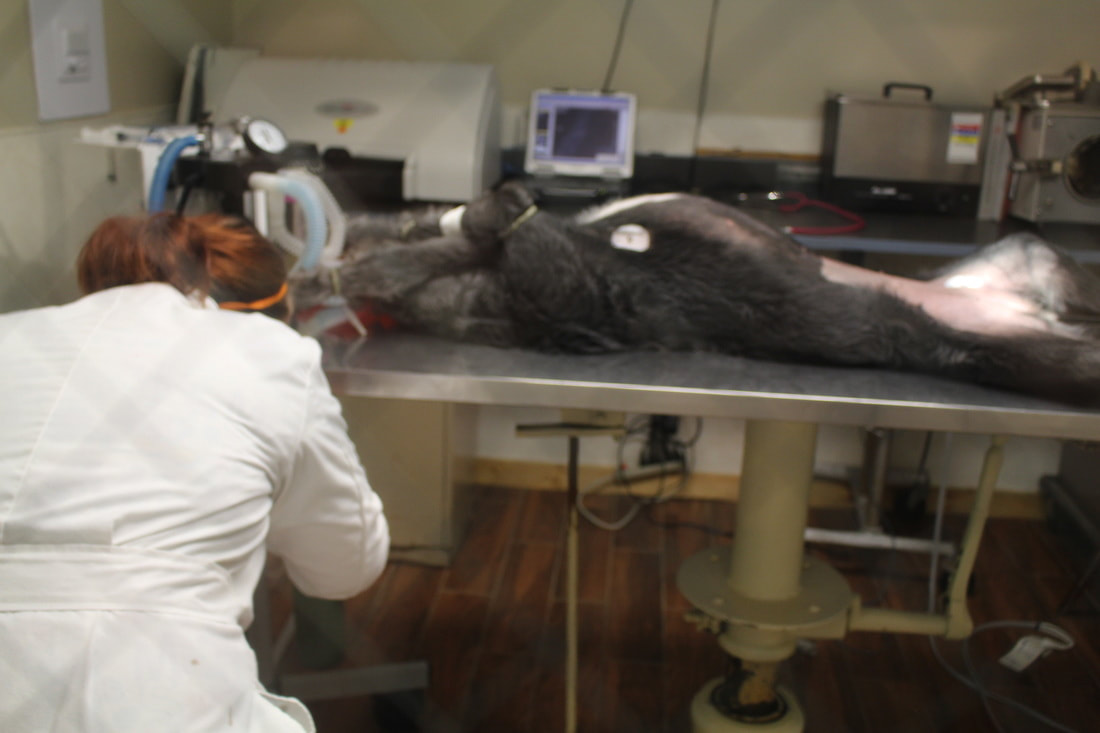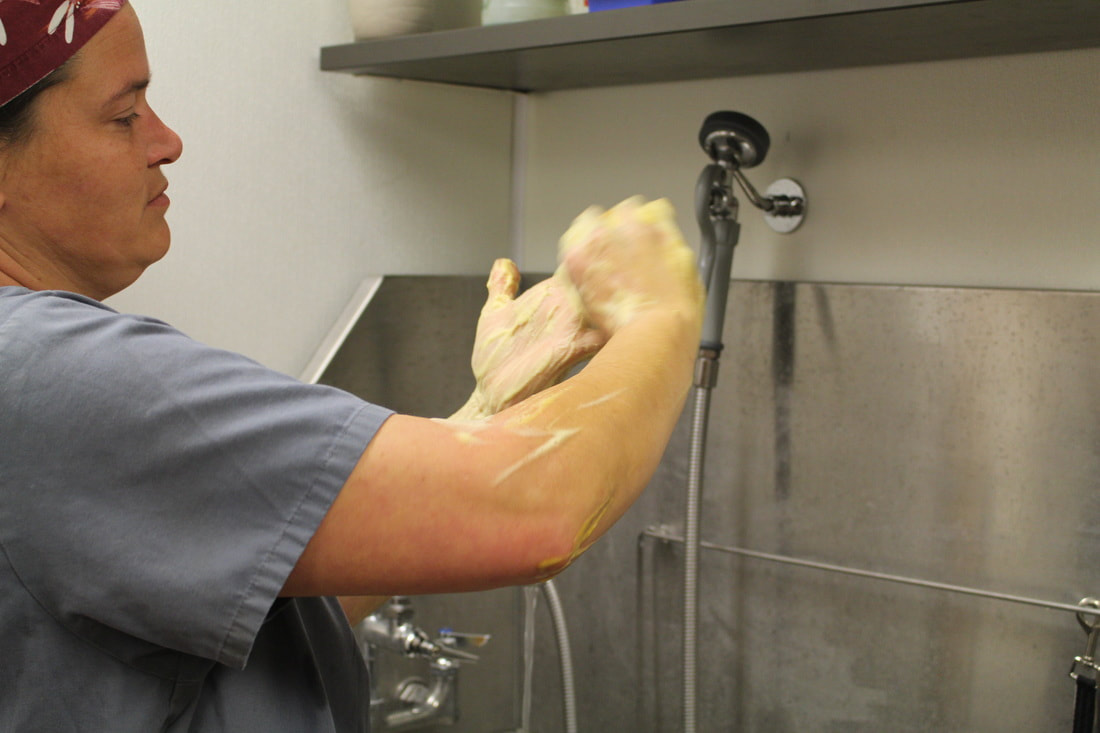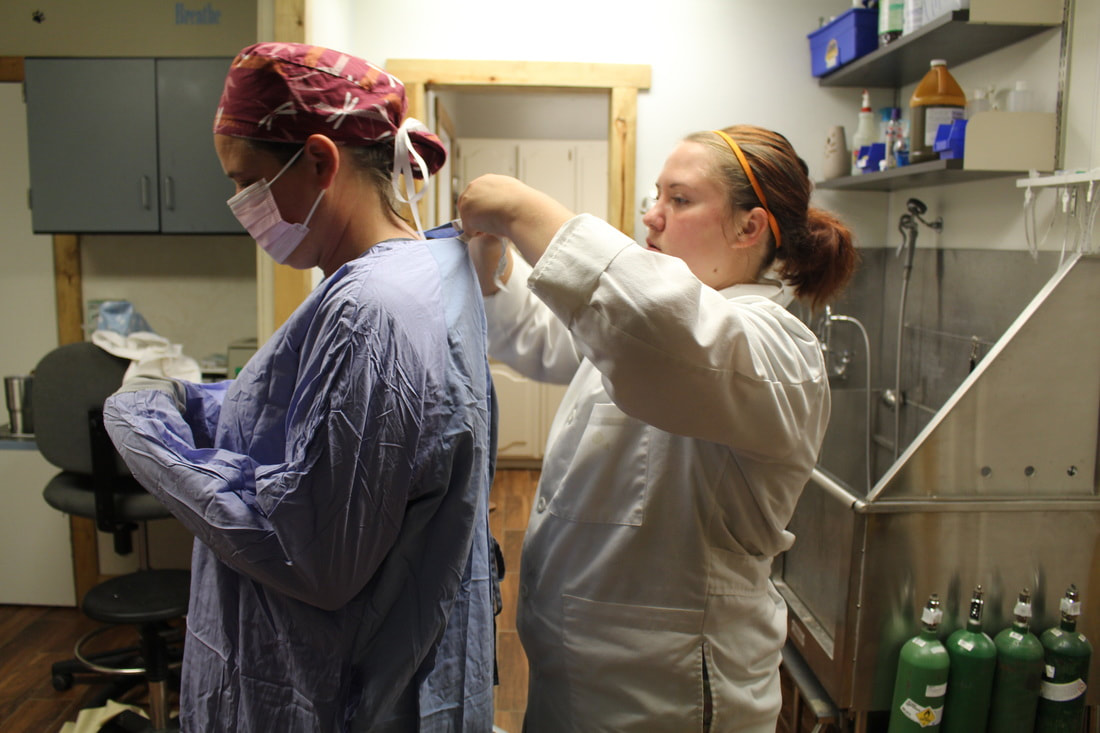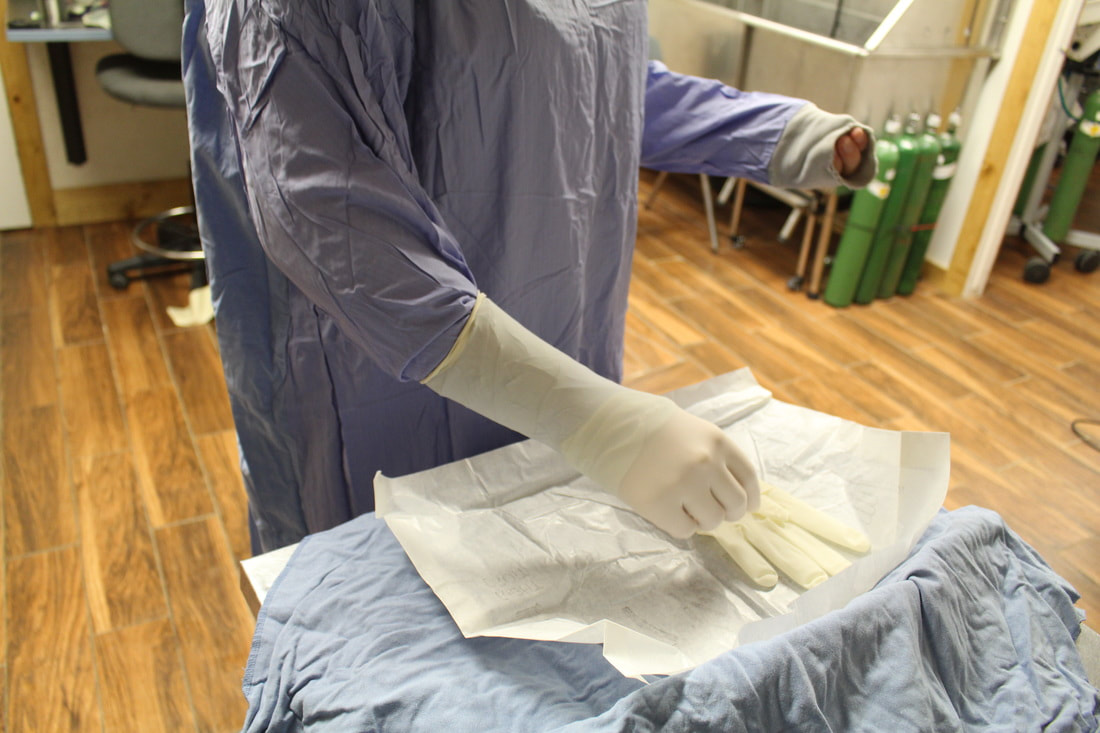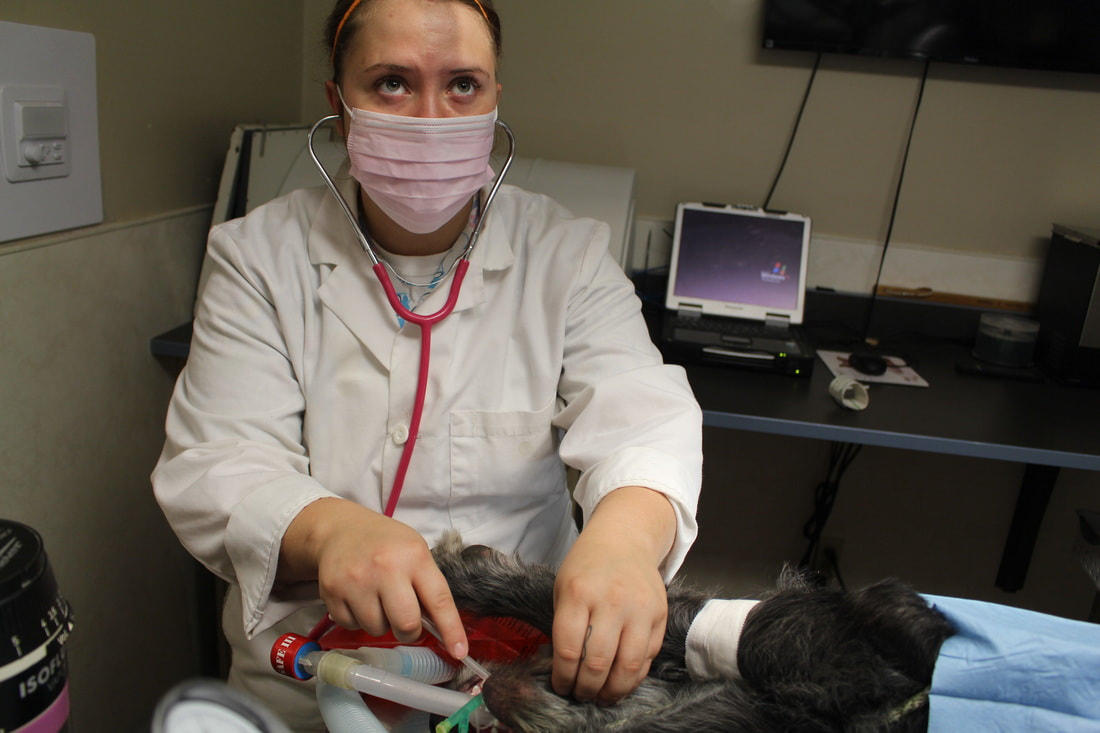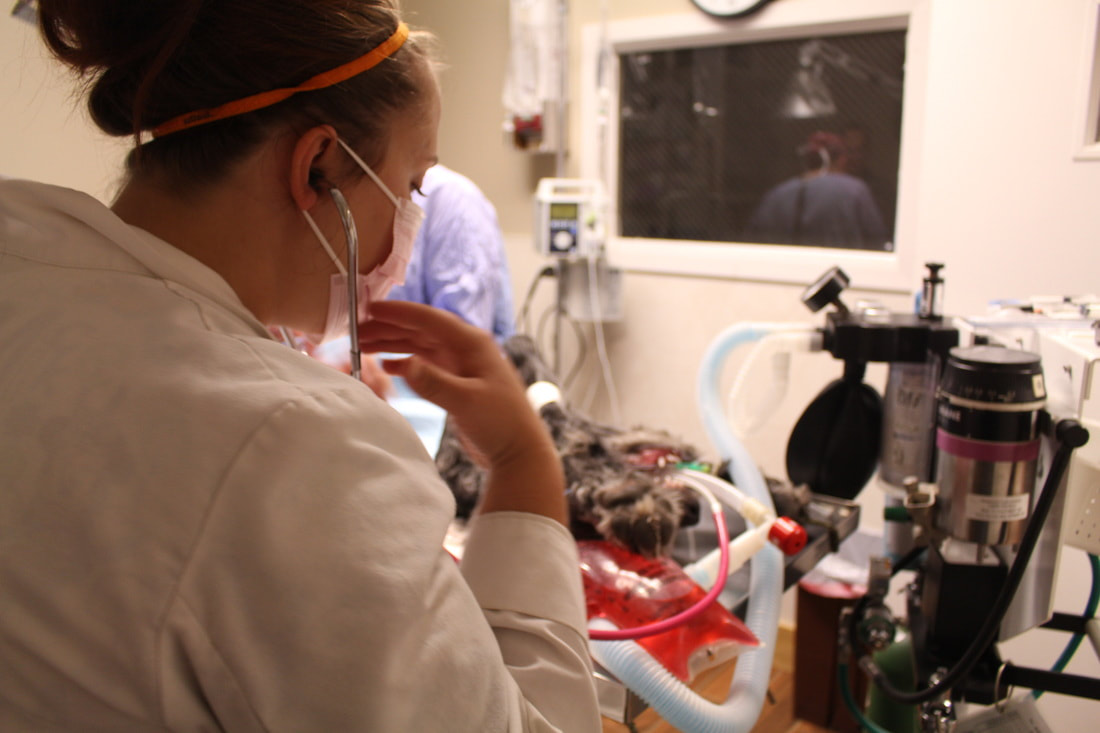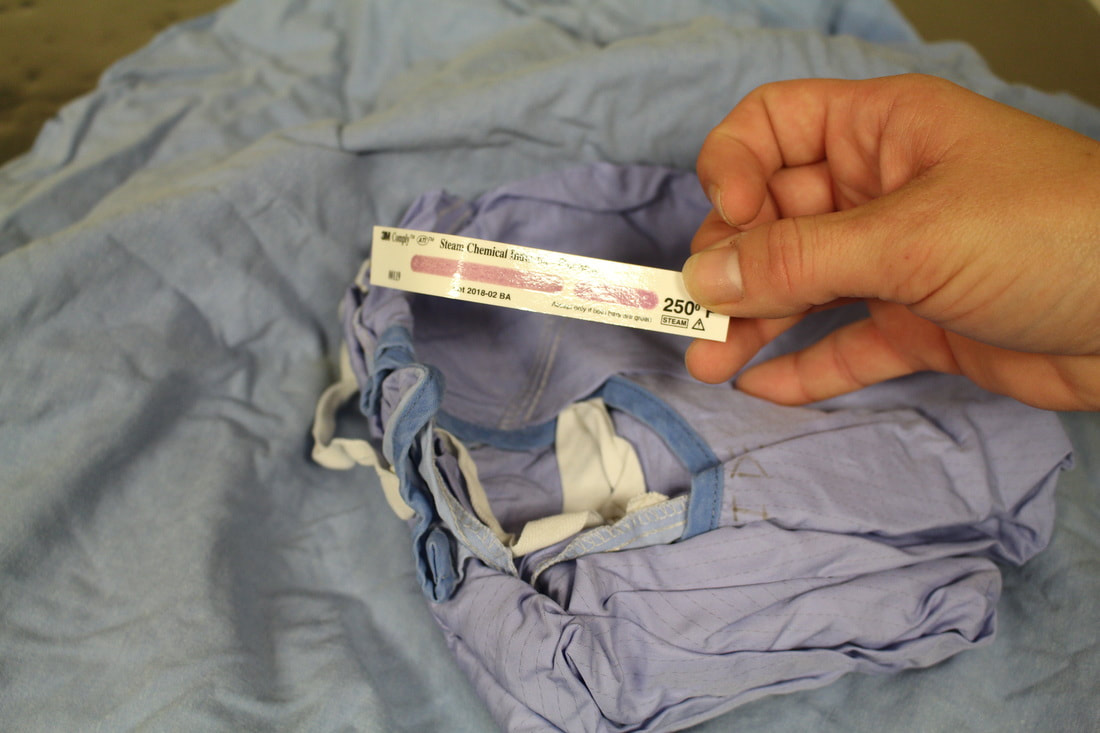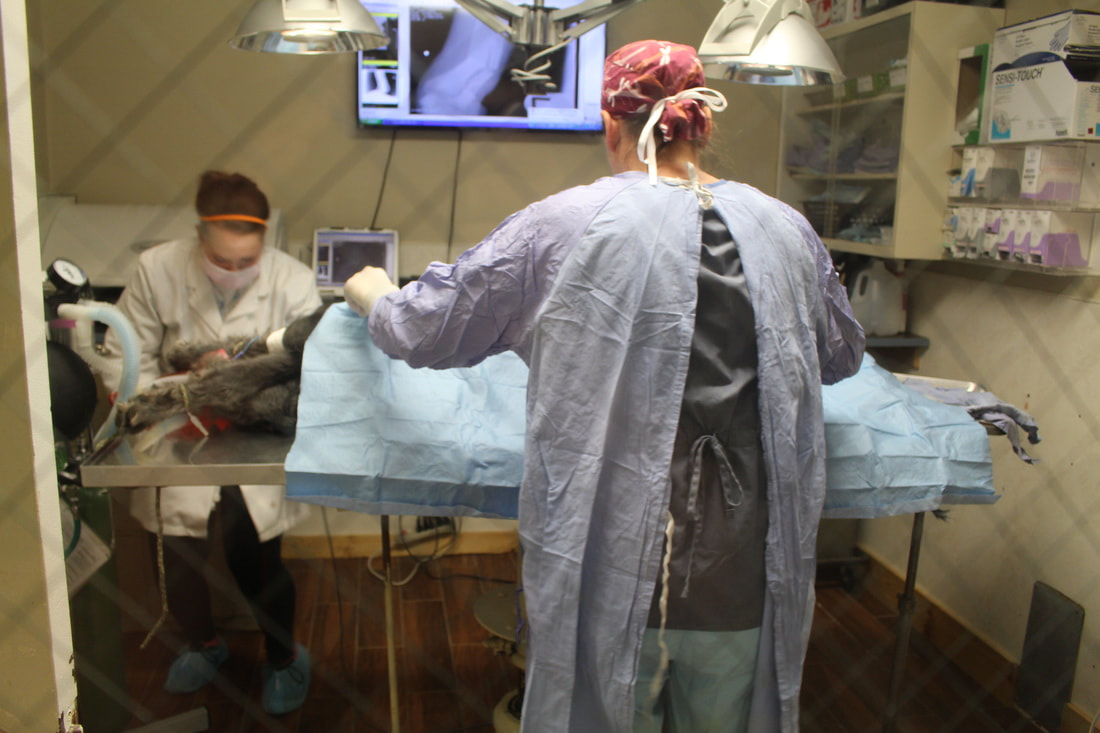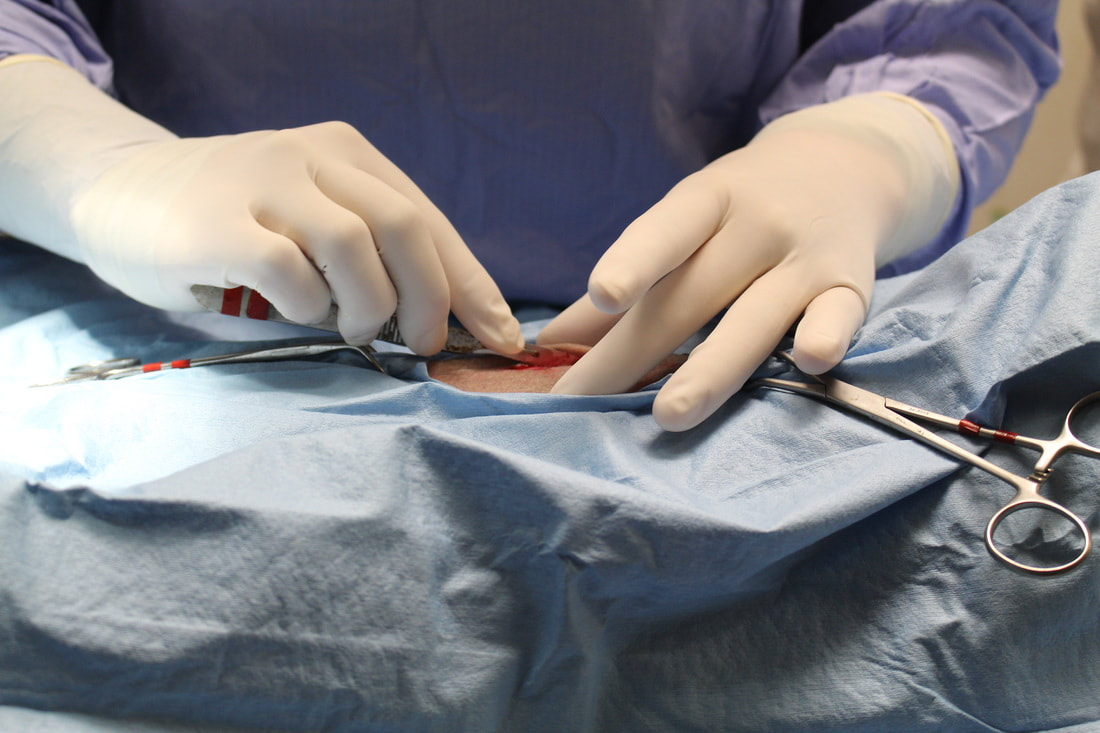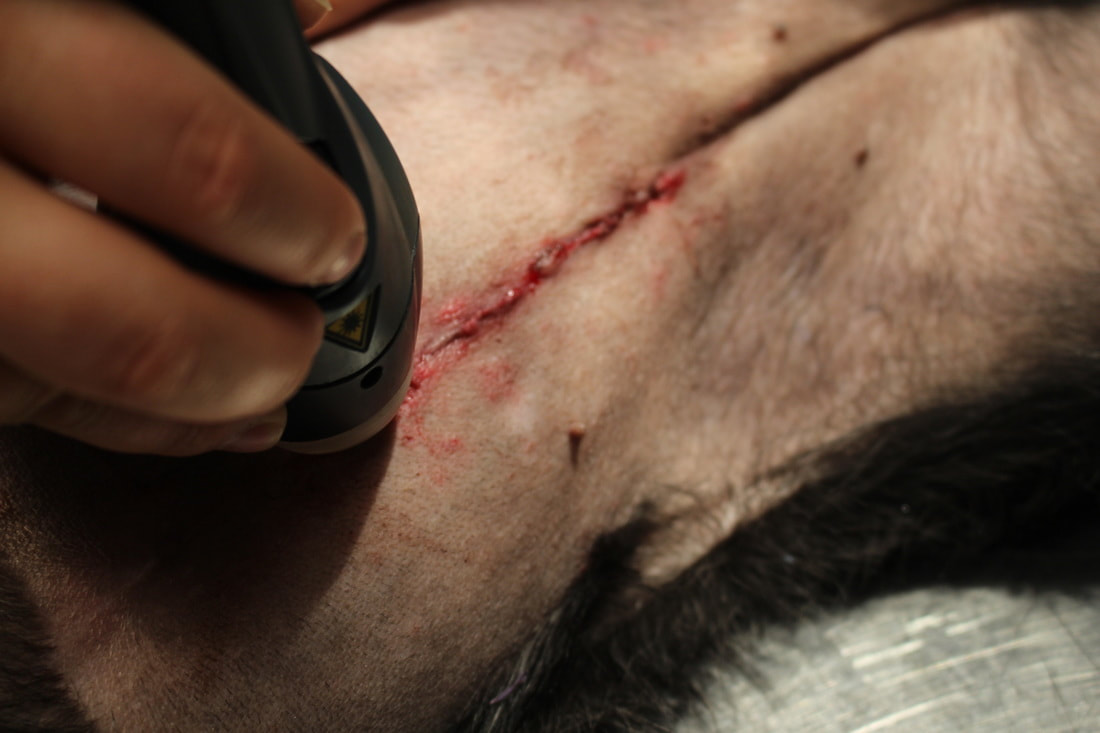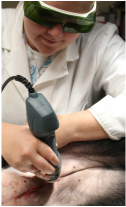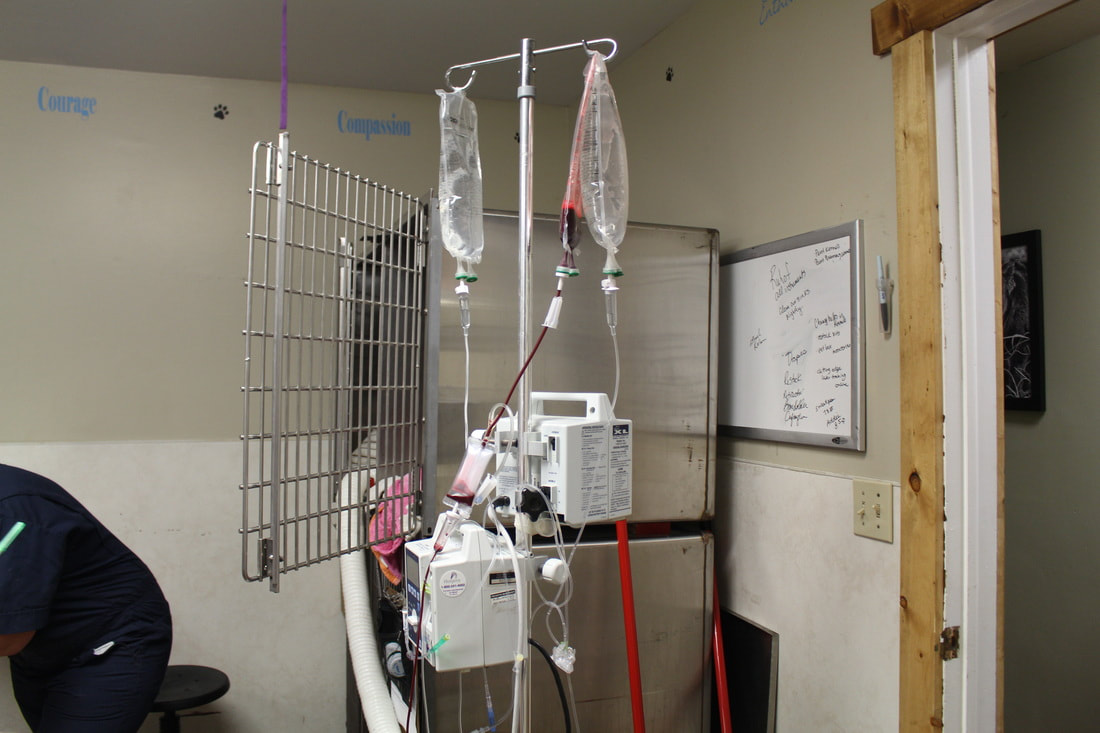Town & Country Veterinary Clinic Surgical Procedures
Are all Surgeries the same?
There are many ways of performing a spay or neuter as there are veterinarians on the planet. All spays involve an abdominal incision with the removal of the ovaries and uterus. Most neuters are a simpler procedure involving the removal of the testicles, but a few require entry into the abdomen. Some surgeons use injectable anesthesia with no supplemental oxygen while others use the same inhaled anesthesia you would find in a human surgery suite. Some use expired sutured material given to them by the local hospital or suture from bulk reels while others only use individually packaged suture material purchased new. Some surgeons wear a smock over the top of their coveralls while others only use wear surgical gowns. Some, well, you probably get the idea by now.
At Town and County Veterinary Clinic, we take pride in adhering to the recommendations placed forth by the American Animal Hospital Association. These closely mirror what most veterinarians were taught in school.
Each patient at Town and County Veterinary Clinic receives the upmost care and consideration before a surgical procedure is performed.
Are all Surgeries the same?
There are many ways of performing a spay or neuter as there are veterinarians on the planet. All spays involve an abdominal incision with the removal of the ovaries and uterus. Most neuters are a simpler procedure involving the removal of the testicles, but a few require entry into the abdomen. Some surgeons use injectable anesthesia with no supplemental oxygen while others use the same inhaled anesthesia you would find in a human surgery suite. Some use expired sutured material given to them by the local hospital or suture from bulk reels while others only use individually packaged suture material purchased new. Some surgeons wear a smock over the top of their coveralls while others only use wear surgical gowns. Some, well, you probably get the idea by now.
At Town and County Veterinary Clinic, we take pride in adhering to the recommendations placed forth by the American Animal Hospital Association. These closely mirror what most veterinarians were taught in school.
Each patient at Town and County Veterinary Clinic receives the upmost care and consideration before a surgical procedure is performed.
- PHYSICAL EXAM
- Each patient undergoes a thorough physical exam to identify any underlying disease that may complicate the surgical procedure and place the patient at risk during anesthesia.
- BLOODWORK
- Each patient receives appropriate blood work to ensure that those organ functions we can?t exam from the outside are considered as well.
- INDIVIDUALIZED ANESTHETIC PROTOCOL
- Each patient receives an anesthetic protocol specific to their individual needs. Developed for the patient based on history, physical exam findings, age, breed, temperament, type of procedure and comorbidities.
- INTRAVENOUS CATHETER
- This allows us to provide intra-op fluid therapy. This also provides a direct vascular route in case of emergency
- PREOPERATIVE MEDICATION
- Preoperative medications are provided to help ease the patient into the general anesthesia this helps to reduce stress and the amount of medication needed during the procedure. Sometimes pain medication is administered at this time so it will be working during and after the surgery.
- GENERAL ANESTHESIA
- After the preoperative medications are working patients are induced with an intravenous agent then intubated and placed on gas with oxygen support. The patient is then prepared for surgery by shaving and sterile preparation of the incision site. After the patient is prepared for surgery they are transferred to the OR.
- Only the surgeon and monitoring technician are allowed, in the OR suite during the procedure. This ensures the cleanest environment possible and decreases the amount of air flow through the room which could hold dirt or pathogen.
- SURGICAL RECOVERY
- Following the surgery, the monitoring technician stays with the patient until they are extubated and returned to a recovery kennel. There is constant monitoring through the recovery process so that the best comfort level can be achieved for the patient. If the patient did not receive their pain medication prior to surgery pain mediation will be administered at this time.
- RETURNING HOME
- Most patients are discharged the same day with written discharge instructions and appropriate medications as needed.
- PHYSICAL EXAM
Surgical Preparation
|
Preparation for the airway and heart protection.
Everything for the patients airway and IV access is prepared and ready to grab before we even start. |
Testing the Equipment
All equipment is tested before each procedure to ensure it is working properly. |
Sterilized Surgical Equipment
All equipment is sterilized before the surgery is ever started. |
Patient Preparation
|
Weight
The patients weight is obtained to ensure each medication is specifically calculated for their size. |
Physical Examination and Medication Selection
Medication for anesthesia is specifically selected for each individual patients needs |
Premedication
Patients are given premedication to help them relax and prevent pain during the procedure. |
|
Placement of IV Catheter for heart protection and Inducing anesthesia
An area for an IV catheter is shaved and sanitized so the catheter can be placed allowing us direct access to the bloodstream during surgery |
Placement of airway protection
An airway tube is placed so we can control depth of anesthesia and breath for the patient during surgery |
Cleaning of the patient
An area of hair is shaved and then the patients skin is cleaned to prevent infections after surgery |
|
Placement of eye lubrication
Animals don't produce tears during anesthesia so eye lubrication is placed to help protect them. |
Monitoring of your pet
Placement of monitoring equipment occurs at the same time as all of these other preparations. |
Your pet is transported to the surgery room
Because the surgery room is kept sterile. All preparations occur in a different room to ensure the surgery room is as clean as possible. |
Doctor Preparation
|
Scrubbing of the hands.
The surgeon cleans their fingernails, hands and forearms to prevent introducing any infections during surgery. |
Gowning
The surgeon wears a special sterile gown as not to contaminate the patient or surgery room with their standard cloths. They also wear special booties and a cap and mask. |
Gloving
The surgeon wears sterile gloves put on in a special way to prevent any contamination of the patient which could lead to infections. |
Patient Monitoring
|
Electronic Monitoring
Our facility is able to provide electronic monitoring of heart, respirations, and temperature through numerous pieces of equipment. |
Human Monitoring
Our facility doesn't trust machines alone every pet receives human monitoring as well. |
Fluid Therapy
Fluid therapy for blood pressure support is provided with every pets surgery. |
Surgery
|
Drapes and Equipment
All equipment used by the surgeon is autoclaved to ensure the procedure is sterile. |
Compassionate Care
Our surgeons plan for all possible complications and have action plans in place before ever entering the surgery suite. |
Current knowledge and techniques
Our surgeons stay current on surgical topics and review frequently the best surgical methods are being performed. |
Recovery
|
Following the Procedure Your Pet is Cleaned
Following the procedure we ensure your pet is clean and ready to go home as we know you will be unable to bath him/her for 10-14 days |
We offer Cold Laser Therapy
We offer Cold Laser Therapy after surgery to help speed healing. |
Monitoring Continues
We continue to monitor your pet until they are released back into your loving arms. We ensure that they are fully awake and ready to return home before their release. |
Going Home
|
When you arrive to get your pet
When you arrive to pick up your pet you will be given your pets personalized discharge instructions of when to call and what to watch for as your pet returns home. |
Questions
If you have questions after we review your discharge instructions with one of your qualified staff. Please ask as we don't want you to leave until you are ready to care for your pet after surgery. |
